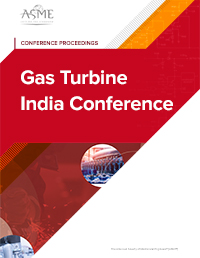Abstract
Two-fluid flow blurring atomization is characterized by the backflow recirculation of the air phase in the liquid pipe by bifurcation of the liquid and airflow. Most of the primary spray process is completed in the injector due to the penetration of air into the liquid tube. Thus, the majority of the liquid ligaments are converted into a fine spray at the outlet of the nozzle. Experiments were performed with two different air to liquid ratios (0.6 and 1) by mass, where water is considered as the liquid and airflow was kept constant (0.2 g/s). To change the ALR, the liquid flow rate was changed. Particle image velocimetry (PIV) diagnostic technique provides the full-field velocity of the spray droplets (discrete phase). It may be noted that sprays are self-seeded and PIV measurements reflect the droplet velocities instead of air velocity. To understand the effect of the spatial resolution of PIV on spray droplet velocity; experiments were conducted at three different spatial resolutions (11.8, 16.4 and 23.22 μm/pixel) for each ALR. As the ALR is increased, the mass of the liquid in the spray decreases, resulting in finer atomization and velocity of the spray droplets. This means that finer droplets are generated for the same mass of air at a lower liquid flow rate as compared to higher liquid flow rate. Note that Reynolds stresses provide an indication of the turbulent breakup of the droplet and larger magnitudes observed for higher ALR indicate finer atomization.












